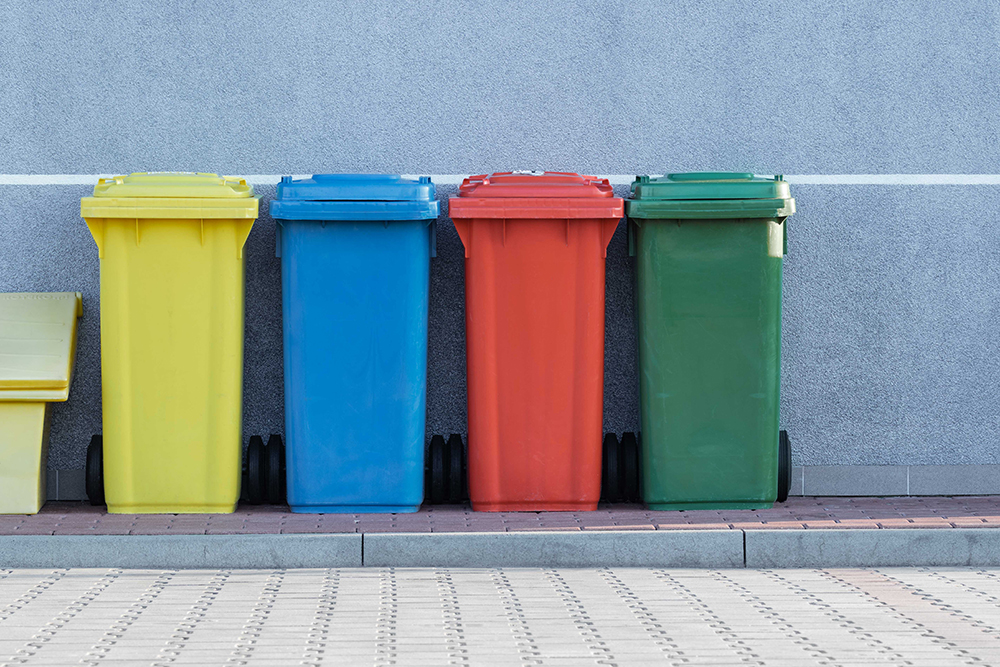
Minnesota’s Hennepin County amended an ordinance to help the county recycle 75% of all trash and food waste by 2030. Image: Unsplash
By Ri’An Jackson
Food waste is a resource, not trash in Minnesota’s Hennepin County.
This year the county, which includes Minneapolis and Saint Paul, began requiring businesses that produce large amounts of food waste, like hotels and restaurants, to recycle it.
Instead of going to landfills, the food waste is composted and used for gardening or landscaping projects, said Kala Fisher, a solid waste manager in Minnesota’s Saint Louis Park. Or it could be repurposed for food rescue programs.
Local officials hope the ordinance will help the county recycle or compost 75% of all trash and food waste by 2030, said Mallory Anderson, a county water reduction and recycling specialist.
And businesses are key waste-producers. About half of the waste in Hennepin comes from businesses, with 20% of it discarded food, according to the county.
Hennepin County is the only county in Minnesota with a food waste ordinance, said Timothy Farnan, principal planner at the Minnesota Pollution Control Agency. But there are similar requirements in other parts of the state. Lake Superior Sanitary District in the Duluth area requires businesses like grocery stores and restaurants to participate in a composting program.
Hennepin saw an opening to reduce its waste after a 2016 waste sort showed 20-30% of it was compostable, Anderson said.
This opening is “like the low-hanging fruit of recycling,” Anderson said. “There’s a huge opportunity to divert all that food waste from landfills and have it made into something new.”
Businesses that do not meet these recycling requirements face fines.
The ordinance also requires cities to ensure that residents have access to curbside organics recycling by 2022 and that tenants of apartments and condominiums have access to basic recycling.
Some cities, like Saint Louis Park, about 5 miles southwest of Minneapolis, have already implemented curbside pickup programs, said Farnan. Saint Louis Park has provided food scrap collection services for residents since 2013.
“Anything that removes the barriers for people to participate definitely helps increase the amount of material that people keep out of the trash and set out for recycling,” Fisher said. “Having a curbside recycling program is a lot easier for people than if they were to have to collect their material and drive it somewhere else.”
There has not been a lot of public resistance to the ordinance, Anderson said. Rather, citizens are trying to navigate the recycling change.
People in areas where curbside organics recycling is offered are enthusiastic to participate, said Farnan, who promotes sustainable materials management practices.
Food waste in landfills is a nationwide problem. The United States wastes about 133 billion pounds of its overall food supply each year, according to the Environmental Protection Agency.
In September of 2015 Environmental Protection Agency Administrator Gina McCarthy and U.S. Department of Agricultural Secretary Tom Vilsack started the first national food waste reduction goal, calling for a 50% reduction of food waste by 2030.
The initiative seems to be effective so far. In 2017, the amount of food composted rose to 2.57 million tons from 2.15 million tons in 2016.
The problem with organic waste in landfills is that when it is buried and decomposes, it produces methane, a greenhouse gas that is 84 times more potent than carbon dioxide over a two-year period, according to Hennepin County.
“So, if we divert it from landfills, then we don’t have that need to try and manage or capture that gas, Farnan said. “In a composting system, you don’t create methane.”
Methane is linked to the impacts of climate change. So, reducing food waste buried in landfills can ease the effects of climate change, according to the Environmental Protection Agency.
Reducing food waste not only impacts the environment, it could impact people.
More than 37 million people in the United States lived in food-insecure homes in 2018, according to the U.S. Department of Agriculture’s 2018 Household Food Security report. The amount of food tossed annually could easily be used to feed those who need it.
“We can use rescue programs to capture edible food and make sure it gets fed to people,” Farnan said.
Rescue programs, like Second Harvest Hartland in Minnesota, work with manufacturing, retail and agricultural companies to move edible food from landfills and to people who live with hunger or food insecurity.
Farnan said Hennepin’s recycling goal is aggressive. “Lots of things will have to go right to get there,” he says.” “But I do think it’s possible. Where there’s a will there’s a way.”